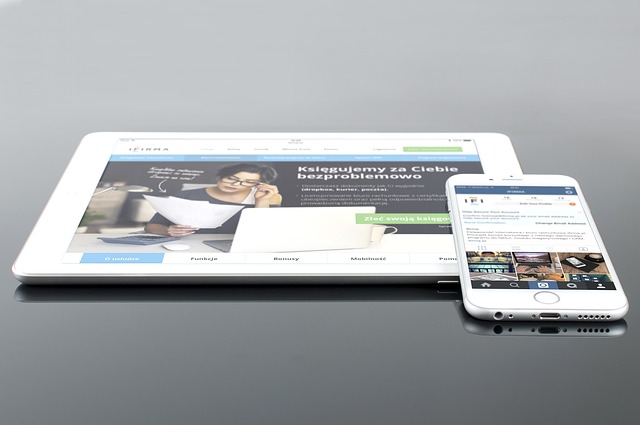In a competitive business environment, professional branding with creative web design is crucial for success. A strong brand extends beyond a logo, encompassing every aspect of online and offline presence. Creative web design, in the digital age, involves strategic tools like color psychology, typography, UX design, and mobile optimization to enhance brand identity and engage target audiences. By integrating these elements into website design, businesses can differentiate themselves, foster trust, and drive conversions. Measuring success through analytics is vital for continuous improvement and staying competitive in the digital landscape.
In today’s digital era, professional branding and web design are indispensable tools for any business aiming for success. A strong brand identity, crafted through strategic branding, forms the cornerstone of your online presence. Creative web design then brings this identity to life, captivating audiences and fostering trust. From intuitive navigation to visually stunning interfaces, this article explores key elements like color psychology, typography, UX design, mobile optimization, and analytics, offering insights into how to unlock your brand’s full potential through effective creative web design.
Understanding Professional Branding: The Cornerstone of Success

Professional branding is the cornerstone of success in today’s competitive business landscape. It involves crafting a unique identity that resonates with your target audience, reflecting your values and expertise. A strong brand isn’t just about a catchy logo; it encompasses every aspect of your online and offline presence, from the design of your website to the tone of your communication. In the digital age, where first impressions last only a few seconds, creative web design plays a pivotal role in shaping how potential clients perceive your business.
A professionally designed website acts as a virtual storefront, serving as the primary touchpoint between you and your audience. It should not only be aesthetically pleasing but also intuitive, optimized for various devices, and aligned with your branding strategy. Incorporating elements like a compelling call to action, clear navigation, and high-quality visuals can significantly enhance user experience, encouraging engagement and fostering trust. Remember, a successful brand tells a story, and a beautifully designed website is the perfect canvas to share yours.
Creative Web Design: Unlocking Your Brand's Visual Potential

Creative web design is more than just aesthetics; it’s a powerful tool to enhance your brand’s visual identity and captivate your target audience. A well-designed website should reflect your brand’s unique personality, values, and purpose while engaging users through visually appealing layouts, captivating graphics, and intuitive navigation. It’s about telling your brand story in a way that resonates with visitors, fostering trust, and encouraging conversion.
By incorporating creative web design principles, you can elevate your online presence, differentiate yourself from competitors, and leave a lasting impression. This involves thoughtful color schemes, typography choices, and imagery that align with your brand guidelines, ensuring a cohesive and memorable user experience. Ultimately, a visually stunning and strategically designed website becomes an asset that drives engagement, boosts brand recognition, and contributes to your overall marketing success.
Building a Memorable Online Presence: Key Elements of Effective Branding

In today’s digital era, a memorable online presence is paramount for any professional or business. Creative web design plays a pivotal role in crafting an unforgettable digital experience that captivates and engages your audience. A unique, visually appealing website acts as a powerful brand ambassador, conveying your values, personality, and expertise to potential clients or customers.
Effective branding goes beyond aesthetics; it involves seamlessly integrating key elements such as consistent color schemes, typography, and imagery that resonate with your target market. By telling a compelling visual story, you establish a strong connection with visitors, fostering trust and recognition. A well-designed website, enhanced by strategic content placement and intuitive navigation, ensures users can effortlessly discover what makes your brand stand out, thereby encouraging engagement and conversions.
Target Audience Engagement: Tailoring Your Website for Maximum Impact

In the realm of professional branding and web design, engaging your target audience is paramount. A creative web design goes beyond aesthetics; it’s about crafting an online space that resonates with your ideal clients, fostering connections, and encouraging interactions. By understanding their needs, preferences, and pain points, you can tailor your website to deliver a personalized experience. This involves intuitive navigation, compelling content, and visually appealing layouts that capture attention and drive conversion.
A strategic approach to target audience engagement leverages user behavior analytics and A/B testing to refine your web design continuously. Incorporating user-generated content, interactive elements, and clear calls-to-action further enhances the user experience, ensuring your website not only attracts visitors but also keeps them engaged and invested in your brand.
Color Psychology and Typography: Tools for Evoking Emotion and Trust

In the realm of professional branding and web design, color psychology and typography are potent tools that go beyond aesthetics, evoking emotion and instilling trust with every stroke and choice. Colors have the power to influence perceptions and trigger subconscious responses, making them crucial elements in creating a compelling brand identity. For instance, warm hues like red and orange can energize users and convey passion, while cool tones like blue and green evoke feelings of calmness and trustworthiness. Integrating these colors thoughtfully into your web design can significantly impact how visitors engage with your brand.
Typography, the art of arranging type, also plays a pivotal role in creative web design. The right font choice not only enhances readability but also communicates a brand’s personality. Serif fonts often convey tradition and reliability, while sans-serif types suggest modernity and minimalism. Pairing these typographic elements with strategic color usage allows designers to craft a narrative that resonates emotionally with the audience, ensuring your brand stands out in the digital landscape.
User Experience (UX) Design: Creating Seamless Navigation and Flow

In the realm of professional branding and web design, User Experience (UX) design plays a pivotal role in crafting engaging online spaces. Creative web design isn’t merely about aesthetics; it’s about creating seamless navigation that guides users effortlessly through a site or application. Skilled UX designers meticulously map out user journeys, ensuring intuitive flows that cater to diverse visitor needs and preferences. This involves carefully structuring content, implementing consistent design patterns, and employing well-spaced layouts to enhance visual hierarchy and usability.
The ultimate goal is to foster a smooth experience, encouraging users to explore further and engage with the brand. By prioritizing user feedback and leveraging data analytics, designers can iteratively refine interfaces, making them more responsive and accessible. This continuous optimization ensures that creative web design stays aligned with user expectations, ultimately driving conversions and fostering stronger brand connections in today’s digital landscape.
Mobile Optimization: Ensuring Your Brand Connects Across Devices

In today’s digital landscape, mobile optimization is no longer an option but a necessity for effective professional branding and web design. With a majority of users accessing the internet through smartphones and tablets, your website serves as a critical touchpoint with potential clients or customers. A creative web design approach that prioritizes mobile responsiveness ensures your brand message is consistently delivered across all devices. This means your website adapts gracefully to different screen sizes, offering seamless navigation and an intuitive user experience regardless of whether it’s viewed on a phone, tablet, or desktop computer.
By implementing mobile-friendly features like touch-optimized elements, faster loading times tailored for smaller screens, and responsive images that adjust based on the device, you’re not just accommodating users but also enhancing your brand’s reputation. A well-optimized mobile website signals to search engines that your business is current and invested in providing excellent user experiences. Moreover, it increases engagement rates, encourages conversions, and ultimately contributes to stronger online branding presence.
Measuring Success: Analytics and Strategies for Continuous Improvement

Measuring success is a crucial aspect of professional branding and web design, allowing creators to understand their impact and refine strategies for continuous improvement. Analytics tools are indispensable in this process. By tracking key metrics such as website traffic, user engagement, conversion rates, and bounce rates, designers can gain valuable insights into how visitors interact with their online presence.
For instance, a well-designed creative web design that effectively captures leads may show high conversion rates, indicating successful branding. Conversely, low engagement or high bounce rates could signal areas for improvement. Through strategic analysis, professionals can adapt their designs and content to better cater to the target audience, ensuring their brand remains competitive in the digital landscape.
